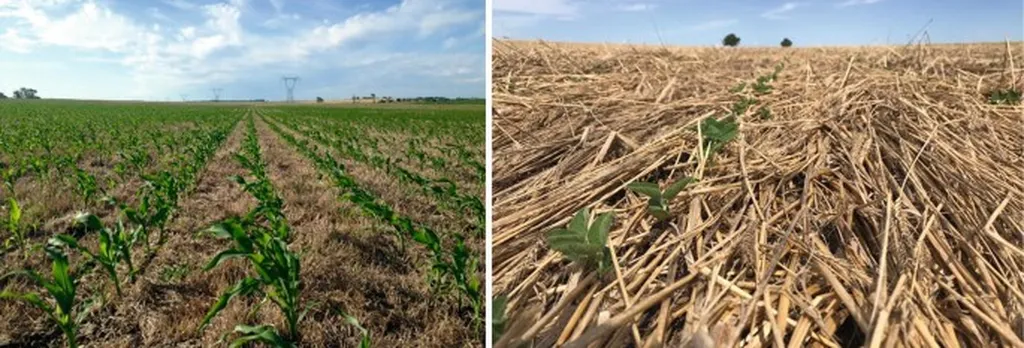In the heart of South Asia’s Indo-Gangetic Plains, a shift is brewing in the way crops are cultivated, and it’s not just about what’s being planted, but how. Researchers, led by Abhay Kumar of the ICAR Research Complex for Eastern Region in Patna, Bihar, are turning the soil on traditional farming practices, quite literally. Their findings, published in the journal ‘Frontiers in Sustainable Food Systems’ (which translates to ‘Frontiers in Sustainable Food Systems’), suggest that conservation agriculture could be a game-changer for the energy sector and the environment.
The conventional method of transplanted puddled rice followed by conventional-tillage wheat has long been the norm. However, this system is highly unsustainable, energy-intensive, and a significant emitter of greenhouse gases. Kumar and his team set out to challenge this status quo, evaluating various tillage and residue management scenarios.
Their study compared several cropping systems, including zero-tillage direct-seeded rice followed by zero-tillage wheat, lentil, chickpea, or mustard, and mungbean. The results were striking. Zero-tillage systems exhibited significantly lower operational energy requirements for irrigation, sowing, and land preparation compared to conventional tillage. “We saw a reduction of up to 40% in energy use for irrigation and a staggering 100% reduction in energy used for land preparation,” Kumar explained.
The benefits didn’t stop at energy savings. Zero-tillage systems also achieved higher system biomass yields and increased wheat yields, leading to a significant reduction in resources like fuel, fertilizer, and machinery. “More than 60% of energy utilization came from crop residue, regardless of the cropping system,” Kumar noted. This finding underscores the potential for crop residues to contribute to a more sustainable and energy-efficient agricultural system.
The study also revealed that zero-tillage systems had lower carbon footprints, higher carbon efficiency, and a better carbon sustainability index than conventional tillage management. This is a significant finding for the energy sector, as agriculture accounts for a substantial portion of global energy consumption and greenhouse gas emissions.
The implications of this research are far-reaching. As the world grapples with climate change and the need for sustainable energy solutions, the findings from Kumar’s study offer a promising path forward. By adopting conservation agriculture practices, farmers can reduce their energy use and carbon footprint while maintaining or even increasing their crop yields.
This shift could also open up new opportunities for the energy sector. As farmers reduce their reliance on fossil fuels for tillage and other agricultural practices, the demand for renewable energy sources could increase. Additionally, the use of crop residues for energy could become more prevalent, providing a new revenue stream for farmers and a more sustainable energy source for the grid.
The study’s findings are a testament to the power of innovation and the potential for technology to drive change in even the most traditional of industries. As Kumar and his team continue to explore the possibilities of conservation agriculture, one thing is clear: the future of farming is here, and it’s looking greener and more energy-efficient than ever before.

